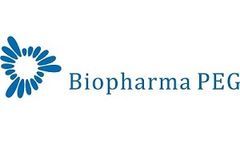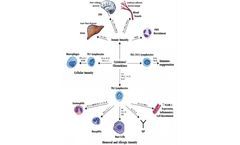Refine by
Epidermal Growth Articles & Analysis
16 articles found
Common markers include estrogen receptor (ER), progesterone receptor (PR), and human epidermal growth factor receptor 2 (HER2). Diagnostic Techniques The journey from suspicion to diagnosis involves several key steps. ...
They are synthesized and secreted by a range of immune cells, including monocytes, macrophages, T cells, B cells, and natural killer (NK) cells, as well as certain non-immune cells like endothelial cells, epidermal cells, and fibroblasts. Cytokines are produced in response to various stimuli and are essential for regulating both innate and adaptive immunity, hematopoiesis (the ...
Identification of dichloroacetate as a target for LoVo cell growth inhibition Dichloroacetate (DCA), an inhibitor of pyruvate dehydrogenase, has recently been found to be a non-toxic antitumor agent, but its specific mechanism is not clear. ...
Prominent tumor-associated antigens include mucin-1 (MUC1), human epidermal growth factor receptor 2 (HER-2), cancer-testis antigen 1 (NY-ESO-1), T cell-recognized melanoma antigen 1 (Melan-A or MART-1), prostate-specific antigen (PSA).AntifungalEradicating invasive fungal infections often requires months to years of continuous drug administration, increasing the ...
Studies have shown that topical minoxidil can significantly promote hair growth. Minoxidil may achieve hair growth effects through the following mechanisms: 1. ...
But finally, on February 3, 2015, the FDA accelerated the approval of Ibrance’s marketing application, which is used in combination with letrozole to treat postmenopausal metastatic breast cancer patients with estrogen receptor (ER) positive and human epidermal growth factor receptor 2 (HER2) negative. Also prior to approval, Ibrance has achieved ...
Patients with abnormal expression of human epidermal growth factor receptor (HER2) account for 15%-20% of all breast cancers, which is highly invasive and has poor prognosis. ...
Currently, 15 ADC drugs have been approved worldwide, including three for breast cancer: T-DM1 and T-DXd, which target human epidermal growth factor receptor 2 (HER2), and sacituzumab govitecan, which targets human trophoblast surface antigen 2 (Trop2). ...
Worldwide, breast cancer is the most commonly diagnosed cancer and the leading cause of cancer deaths in women, with over 650,000 deaths in 2020.1,2 Human epidermal growth factor receptor 2 (HER2)-targeted agents have improved outcomes in HER2-positive breast cancer, but most patients in first-line therapy do not respond to current therapies, eventually relapse ...
For example, patients with breast cancer can be stratified based on their Human Epidermal Growth Factor 2 (HER2) status. Depending on whether they’re HER2-positive or HER2-negative, different drugs and treatments are prescribed. ...
ByLifebit
Interleukin-8 (IL-8) IL-8 is a potent neutrophil chemotactic and activating factor produced by monocytes, epithelial cells, epidermal cells, fibroblasts and T lymphocytes in response to stimulation by IL-1, TNF and the exogenous factor bacterial polysaccharide (LPS). ...
Since contemporary manual FISH signal analysis is low-effective and inconsistent, it is an attractive research area to develop automated FISH image scanning systems and computer-aided diagnosis (CAD) schemes. The gene expression of epidermal growth factor receptors 2 (HER2) is highly related to results of patients with probable breast cancer. ...
More than 200 types of human cytokines have been identified, which can be generally classified into interleukins, interferons, tumor necrosis factors, colony-stimulating factors, chemokines, growth factors, etc. according to their structure as well as function. ...
Prolotherapy has been a part of modern orthopedic practices since the 1940s. It is growing in popularity not just in the U.S., but globally as well. Also known as “regenerative injection therapy” (RIT), prolotherapy is a procedure used to treat musculoskeletal conditions including tendinopathies, osteoarthritis, and chronic pain of the cervical spine, lumbar spine, and pelvis (Sit et ...
PCSK9 has been shown to bind to the epidermal growth factor-like repeat A (EGF-A) domain of the LDLR; it enhances the degradation of the LDLR by an unknown. ...
Recently, we reported that stabilin-2 is a PS receptor that mediates the clearance of apoptotic cells, thus releasing the anti-inflammatory cytokine, transforming growth factor β. In this study, we showed that epidermal growth factor (EGF)-like domain repeats (EGFrp) in stabilin-2 can directly and specifically recognize PS. ...












